204,000 Self-Employed in CT; Freelancers Increasing Nationwide
/The ranks of the self-employed are growing in Connecticut, as the number of freelancers continues to expand nationwide. In Connecticut, there are now an estimated 204,000 individuals who are self-employed, more than 11 percent of the state’s workers, which exceeds the national average.
As of March 2016, approximately 15.3 million people in the United States designated their employment status as “self-employed,” according to the U.S. Bureau of Labor Statistics, and increase of about 700,000 since May 2014, just over 10 percent of all U.S. employment.
In 2015, 29 states and the District of Columbia had self-employment rates below the U.S. rate of 10.1 percent, and 21 states had rates as least as high. Montana had the highest rate among states, 16.1 percent, followed by Maine (15.4 percent), Vermont (14.4 percent), and South Dakota (14.2 percent). The lowest rates were in the District of Columbia (7.1 percent), Delaware (7.2 percent), and Alabama (7.5 percent), according to BLS data.
Additionally, published reports last fall indicated that 54 million individuals report doing freelance work, either full-time or on the side, in the U.S., representing about one-third of the nation’s workforce. That is an increase of 700,000 since 2014, according to a comprehensive study conducted by the independent research firm Edelman Berland.
“Americans who are freelancing already contribute more than $700 billion to our national economy and help U.S. businesses compete and find the skills that they need,” said Fabio Rosati, CEO of Elance-oDesk, which commissioned the survey with Freelancers Union. The study identified five freelancer segments:
- Independent Contractors (36% of the independent workforce / 19.3 million professionals)
- Moonlighters (25% / 13.2 million)
- Diversified workers (26% / 14.1 million)
- Temporary Workers (9% / 4.6 million)
- Freelance Business Owners (5% / 2.5 million)
In its scale, scope, and complexity, the transformation (of the workforce) will be unlike anything humankind has experienced before," Klaus Schwab, founder and executive chairman of the World Economic Forum, which organized the Davos gathering, wrote earlier this year. "The speed of current breakthroughs has no historical precedent. ... These changes herald the transformation of entire systems of production, management, and governance."
 Already, 2.9 million freelancers earned more than $100,000 last year, up from 2 million who hit the six-figure mark just four years earlier, according to MBO Partners. The report indicated that 60 percent of freelancers surveyed said they started freelancing by choice—up from 53 percent last year—and 67percent of freelancers agree that more people are choosing to work independently today compared to three years ago.
Already, 2.9 million freelancers earned more than $100,000 last year, up from 2 million who hit the six-figure mark just four years earlier, according to MBO Partners. The report indicated that 60 percent of freelancers surveyed said they started freelancing by choice—up from 53 percent last year—and 67percent of freelancers agree that more people are choosing to work independently today compared to three years ago.
The survey commissioned by Freelancers Union and Upwork in 2015 found that than one-third of freelancers report that demand for their services increased in the past year, and 3 in 4 non-freelancers are open to doing additional work outside their primary jobs to earn more money, if such an opportunity was available. The report stated that “freelancing is becoming a more prevalent, viable option for workers—a trend that spans across borders, industries and occupations.”


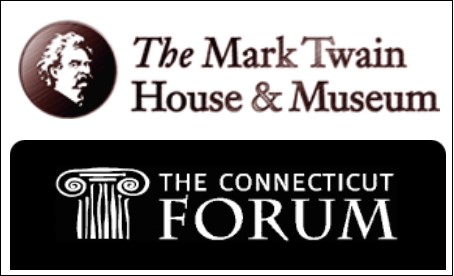

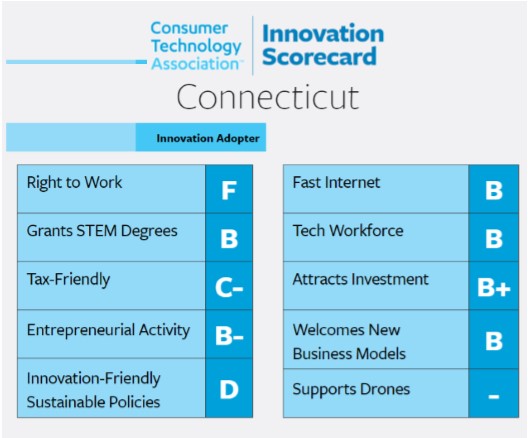
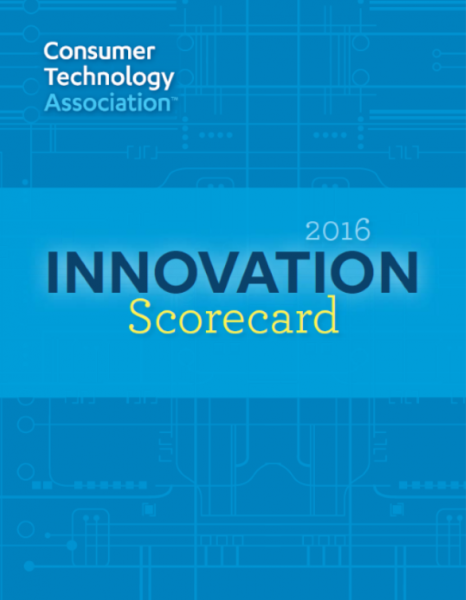
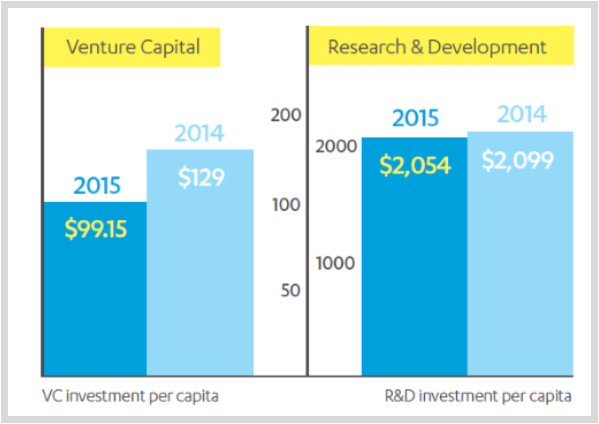 The report also highlights an area of decline in Connecticut: “Over $100 million of venture capital left Connecticut in 2015, causing the state to lose ground after earning an ‘A-’ in the category in the inaugural 2015 Scorecard. Connecticut should improve its tax code, which is among the least growth-friendly in the country, and reform regulations that stifle innovation.”
The report also highlights an area of decline in Connecticut: “Over $100 million of venture capital left Connecticut in 2015, causing the state to lose ground after earning an ‘A-’ in the category in the inaugural 2015 Scorecard. Connecticut should improve its tax code, which is among the least growth-friendly in the country, and reform regulations that stifle innovation.”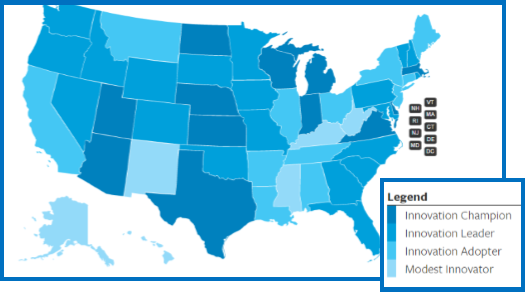

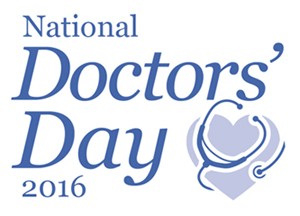

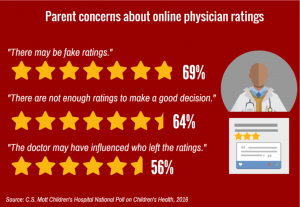
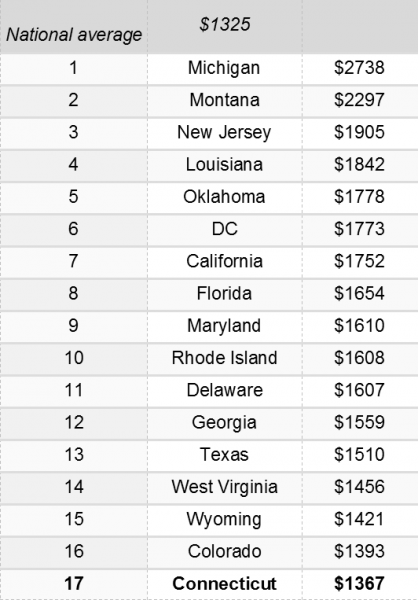
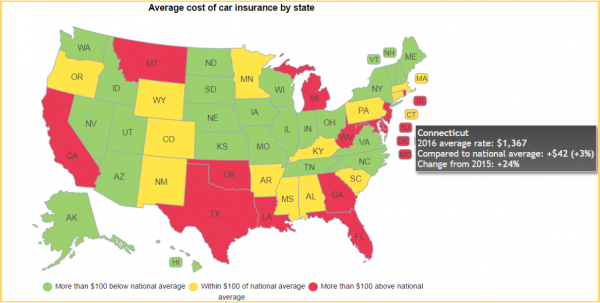 The national average for a full-coverage policy as featured in the Insure.com report came in at $1,325 this year – a slight increase from last year’s average of $1,311. Rates varied from a low of $808 a year in Maine to a budget-busting $2,738 in Michigan. Insurance rates in Michigan are more than double (107 percent) the national average.
The national average for a full-coverage policy as featured in the Insure.com report came in at $1,325 this year – a slight increase from last year’s average of $1,311. Rates varied from a low of $808 a year in Maine to a budget-busting $2,738 in Michigan. Insurance rates in Michigan are more than double (107 percent) the national average. "There are some things that state governments can do to make their states more attractive to research and development," including R&D tax credits, Nariman Behravesh, chief economist at IHS Inc. in Lexington, Massachusetts told Governing magazine. "State governments — if they carefully target areas where they think they have a bit of a competitive advantage — they could develop a cluster around their universities, as well."
"There are some things that state governments can do to make their states more attractive to research and development," including R&D tax credits, Nariman Behravesh, chief economist at IHS Inc. in Lexington, Massachusetts told Governing magazine. "State governments — if they carefully target areas where they think they have a bit of a competitive advantage — they could develop a cluster around their universities, as well."


 ents currently working on the Hartford Hand initiative. Each week, Welch and colleagues Yonathan Moshayev, Jake Green, Amber Sayer, and Stephen Sousa, spend several hours improving the current design to make the unique Hartford Hand a reality for patients.
ents currently working on the Hartford Hand initiative. Each week, Welch and colleagues Yonathan Moshayev, Jake Green, Amber Sayer, and Stephen Sousa, spend several hours improving the current design to make the unique Hartford Hand a reality for patients.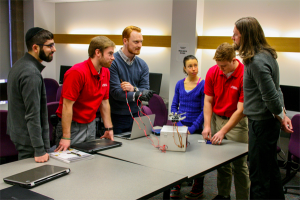

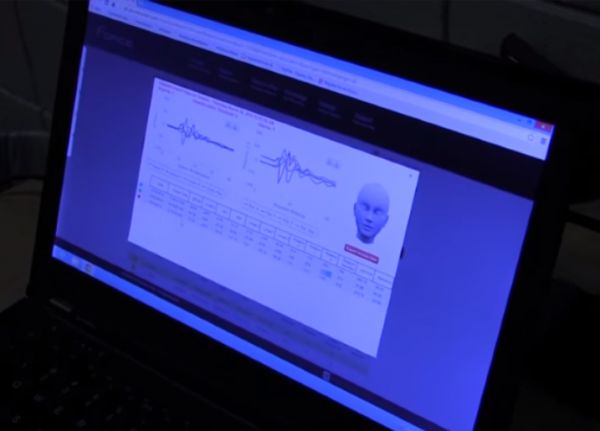
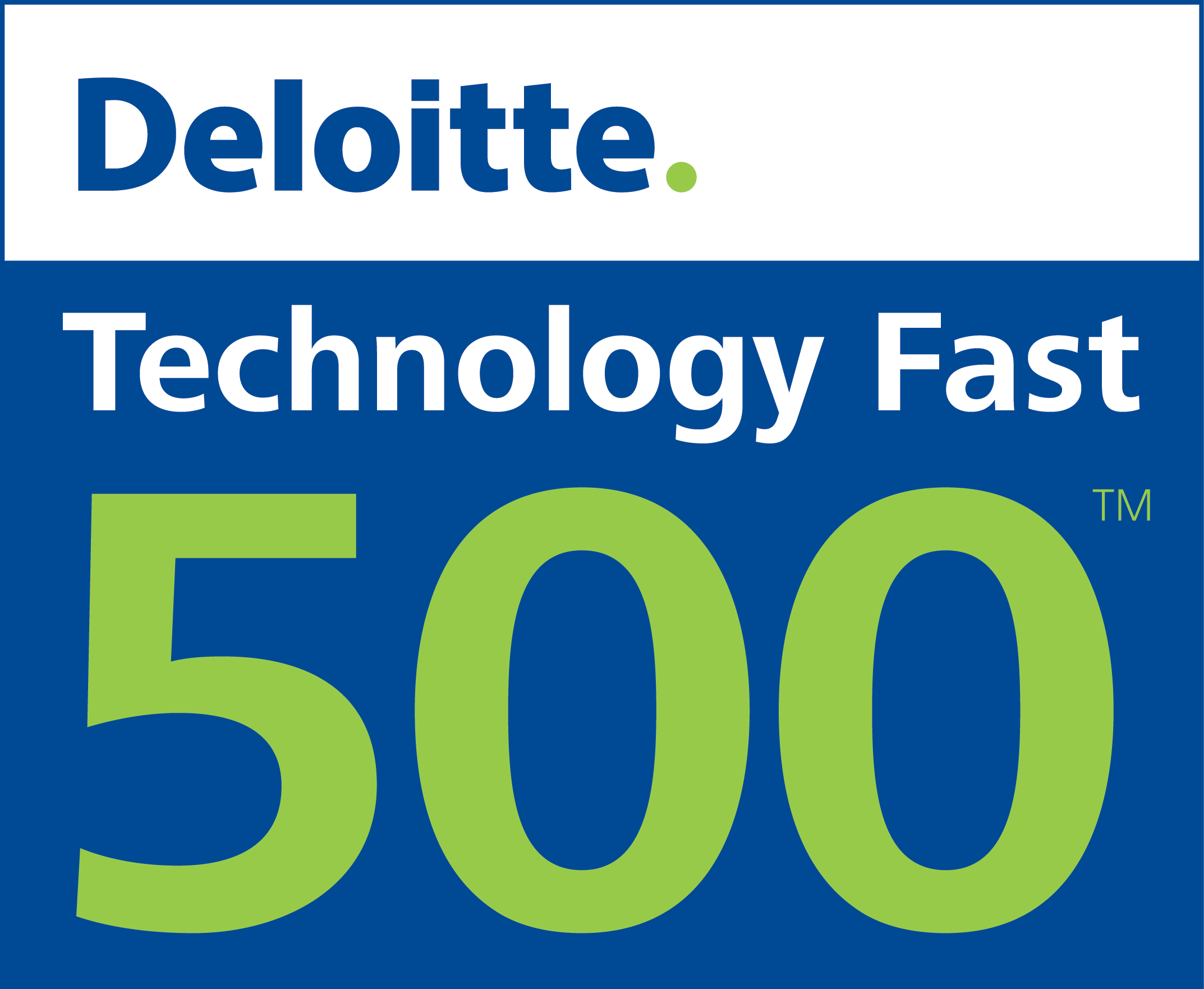

 Also making the list were Evariant of Farmington, a software developer, at number 272, and HP One, a software company in Trumbull at number 307. Biopharmaceutical company Alexion, in the midst of moving its headquarters from Cheshire to New Haven, was ranked at number 349, and etouches, a Norwalk software company ranked at number 357. Rounding out the Connecticut companies on the list is Wallingford oil extraction technology company APS Tecnhology, at number 466.
Also making the list were Evariant of Farmington, a software developer, at number 272, and HP One, a software company in Trumbull at number 307. Biopharmaceutical company Alexion, in the midst of moving its headquarters from Cheshire to New Haven, was ranked at number 349, and etouches, a Norwalk software company ranked at number 357. Rounding out the Connecticut companies on the list is Wallingford oil extraction technology company APS Tecnhology, at number 466.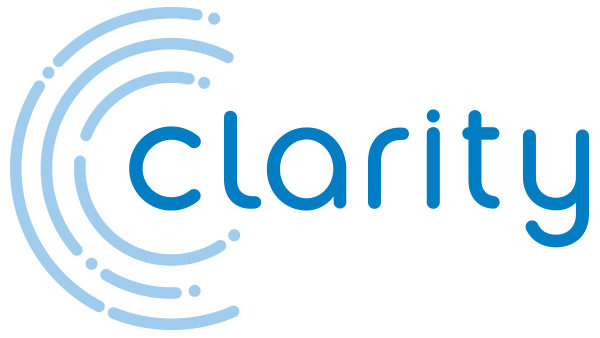 rough technology’s continued disruption and proliferation across industries,” said Sandra Shirai, principal, Deloitte Consulting LLP and US technology, media, and telecommunications leader.
rough technology’s continued disruption and proliferation across industries,” said Sandra Shirai, principal, Deloitte Consulting LLP and US technology, media, and telecommunications leader.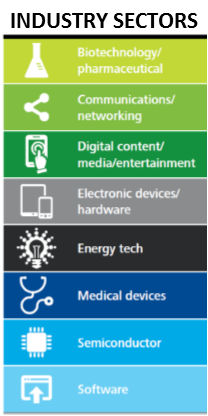 Overall, 283 of the 500 companies were in the software sector, and 67 percent of the 500 companies have received venture capital funding at some point in their company’s history. Topping the list was StartApp, with a growth rate of 21,984 percent from 2011 to 2014. Based in New York and founded in 2010, StartApp provides a free monetization and distribution platform that integrates with applications on mobile devices.
Overall, 283 of the 500 companies were in the software sector, and 67 percent of the 500 companies have received venture capital funding at some point in their company’s history. Topping the list was StartApp, with a growth rate of 21,984 percent from 2011 to 2014. Based in New York and founded in 2010, StartApp provides a free monetization and distribution platform that integrates with applications on mobile devices.



























